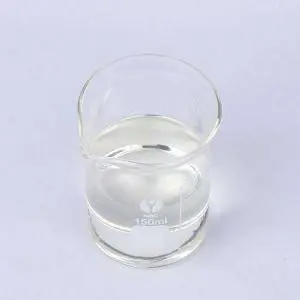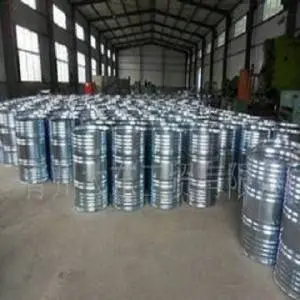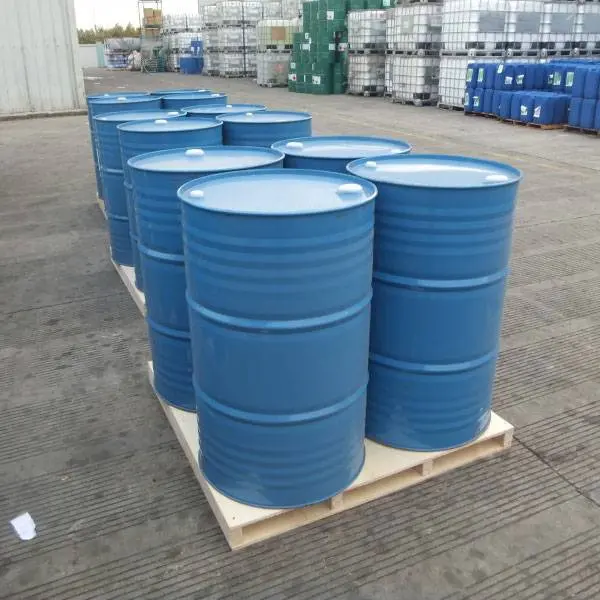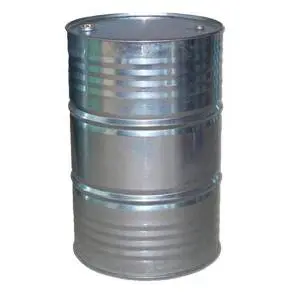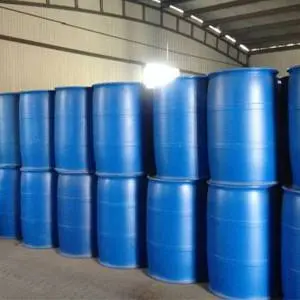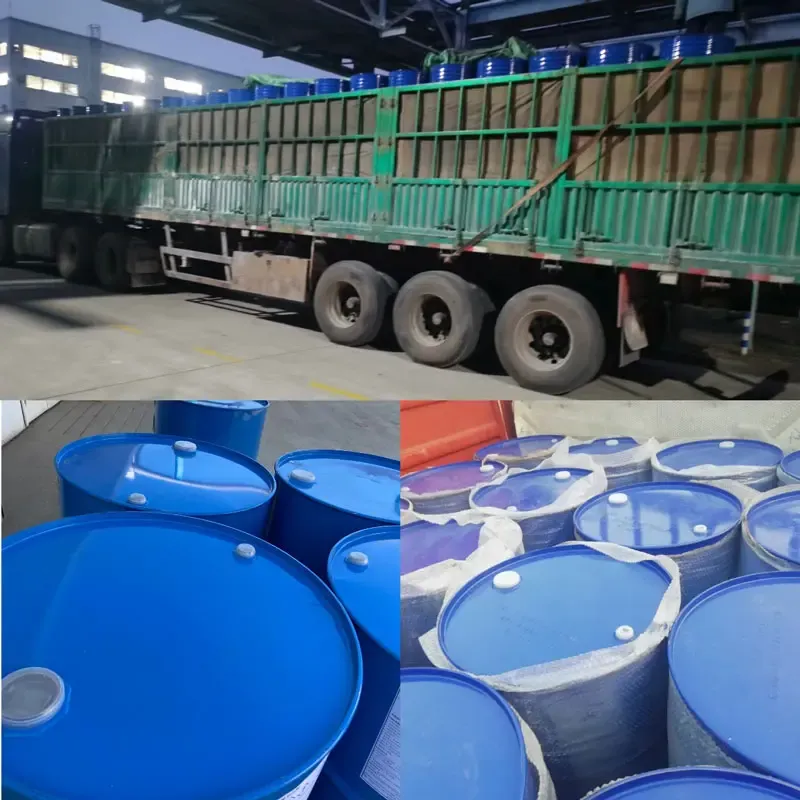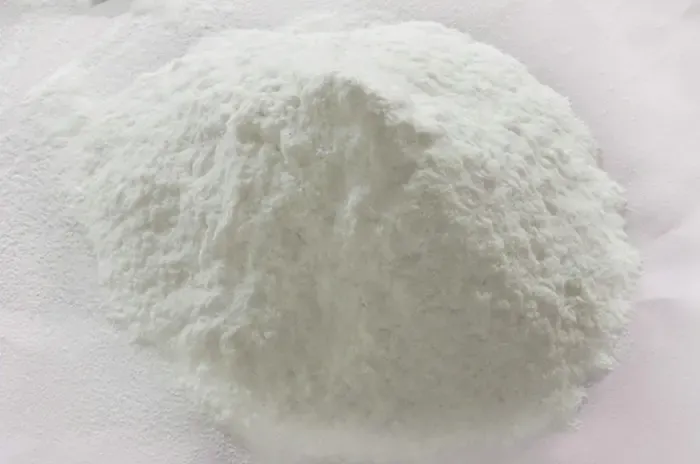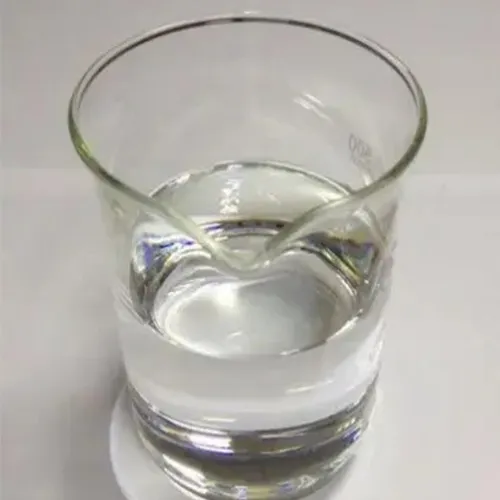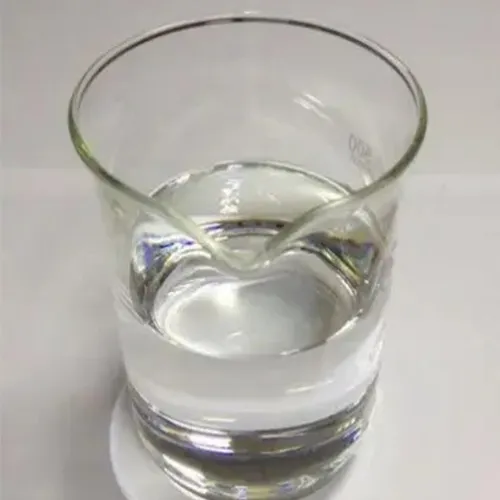High Purity Methyl Morpholine: Efficient Solvent & Catalyst
Understanding Methyl Morpholine: A Critical Catalyst and Intermediate
In the intricate landscape of chemical synthesis and industrial applications, Methyl Morpholine (NMM) stands out as a versatile and indispensable compound. Renowned for its efficacy as a tertiary amine catalyst and its utility as a chemical intermediate, NMM plays a pivotal role across various sectors, from pharmaceuticals to advanced materials. This comprehensive article delves into the industrial significance, technical specifications, application versatility, and strategic advantages offered by high-quality NMM, providing insights crucial for B2B decision-makers and technical professionals.
Industry Trends and Market Dynamics
The global market for compounds like Methyl Morpholine is experiencing robust growth, driven by an expanding demand in downstream industries, particularly in the production of polyurethane foams, elastomers, and coatings. The increasing adoption of flexible and rigid polyurethane foams in construction, automotive, and furniture industries significantly propels NMM consumption. Furthermore, its role as a solvent and intermediate in the pharmaceutical and agricultural chemical sectors contributes to a stable demand profile. Key trends indicate a shift towards higher purity NMM, driven by stringent regulatory requirements and the need for enhanced performance in sensitive applications. Innovations in production technologies are also focusing on more sustainable and energy-efficient synthesis routes, aligning with global environmental objectives and reducing operational costs for manufacturers.
Another significant trend involves the development of specialized NMM derivatives that offer tailored catalytic properties or improved solubility, expanding its utility in niche applications. The emphasis on supply chain resilience and quality assurance, especially in the wake of global disruptions, has also made reliable sourcing from reputable manufacturers a paramount concern for B2B procurement professionals. This ensures consistent product quality, adherence to specifications, and uninterrupted operational workflows. As industries increasingly prioritize both performance and environmental responsibility, the demand for high-purity, sustainably produced Methyl Morpholine is projected to continue its upward trajectory, fostering innovation in its synthesis and application.
Manufacturing Process Flow of Methyl Morpholine
The production of high-purity Methyl Morpholine is a sophisticated chemical engineering process that demands meticulous control over reaction parameters and purification steps. The primary synthesis route typically involves the methylation of morpholine. This process is generally catalytic, ensuring high selectivity and yield. Below is a detailed breakdown of the typical manufacturing process, highlighting key stages and emphasizing quality control.
Process Steps:
-
Raw Material Sourcing and Preparation:
High-grade morpholine (C₄H₉NO) and a methylating agent (e.g., methanol, dimethyl sulfate, or methyl iodide) are meticulously sourced from approved vendors. Purity of these precursors, especially morpholine, is critical to the final product quality. Raw materials undergo initial quality checks against stringent internal specifications and relevant international standards like ASTM D2240 for purity, ensuring minimal contaminants enter the reaction stream.
-
Reaction (Methylation):
Morpholine is reacted with the methylating agent in a precisely controlled, often continuous, catalytic reactor. This is typically a vapor-phase catalytic reaction, utilizing specialized solid acid catalysts (e.g., zeolite-based catalysts like HZSM-5) to achieve high conversion rates and selectivity towards N-methylation, minimizing undesired side reactions such as O-methylation or ring opening. Typical operating conditions involve elevated temperatures (e.g., 200-300°C) and controlled pressure (e.g., 1-5 bar). The reactor engineering is optimized for efficient mass transfer and heat removal, vital for maintaining exothermic reaction stability and maximizing yield. Reaction kinetics are continuously monitored via online analytical systems.
-
Separation and Quenching:
Post-reaction, the hot product mixture is rapidly cooled, or quenched, to halt further reactions and stabilize the product. This stage involves the separation of the gaseous phase from the liquid phase. Unreacted raw materials, catalysts, and crude Methyl Morpholine are separated from each other. Techniques such as condensation, flash distillation, and decantation are typically employed to remove lighter by-products and recover unreacted starting materials for recycle, optimizing resource utilization and reducing waste.
-
Purification (Fractional Distillation):
The crude NMM undergoes multiple, highly efficient stages of fractional distillation. This critical purification step aims to remove all residual impurities, including unreacted morpholine, methanol, water, and other high-boiling or low-boiling organic by-products, to achieve the desired high purity level, often exceeding 99.5%. Advanced distillation columns with high theoretical plate counts, such as packed columns or tray columns, are utilized, demanding precise temperature, pressure, and reflux ratio control. This ensures compliance with exacting industry standards for purity, such as those specified by ISO 9001 and specific pharmacopoeia grades for pharmaceutical applications.
-
Quality Control and Testing:
Throughout the entire manufacturing process, from raw material inspection to final product packaging, samples are rigorously tested in a dedicated, accredited quality assurance laboratory. Tests include Gas Chromatography (GC) for comprehensive purity and impurity profiling (e.g., ASTM D6584), Karl Fischer titration for moisture content (e.g., ASTM E1064), density measurement (e.g., ASTM D4052), refractive index (e.g., ASTM D1218), and boiling point analysis. Adherence to international standards such as ISO 9001 for quality management systems is strictly maintained. Batch-specific Certificates of Analysis (CoA) are provided with every shipment, ensuring complete traceability and transparency.
-
Packaging and Storage:
The final, purified product is carefully packaged into appropriate container111s (e.g., HDPE drums, steel drums, IBC tanks, or bulk ISO tanks) under a nitrogen blanket if required, to prevent contamination, oxidation, or moisture absorption. All container111s are sealed securely and labeled in accordance with global chemical safety regulations, including GHS (Globally Harmonized System). Storage conditions are controlled to maintain product integrity and extend its shelf life, typically under cool, dry conditions away from direct sunlight, heat, and oxidizing agents. The typical service life or shelf-life under these conditions is 24 months from the date of manufacture.
Target industries for this high-purity NMM include petrochemicals (as a catalyst or solvent), specialty chemicals manufacturing, pharmaceuticals (as a synthetic intermediate), and various polymer industries (especially polyurethanes). The emphasis on precise engineering and rigorous testing ensures advantages in typical application scenarios such as enhanced reaction kinetics, improved product yields, and minimized impurities in end-products, contributing to energy saving by optimizing reaction times and corrosion resistance through formulation stability.
Technical Specifications of Methyl Morpholine
Understanding the precise technical specifications of Methyl Morpholine is paramount for its effective and safe utilization across diverse industrial applications. High-quality NMM is characterized by stringent adherence to specific physical and chemical parameters, ensuring consistent performance and reliability.
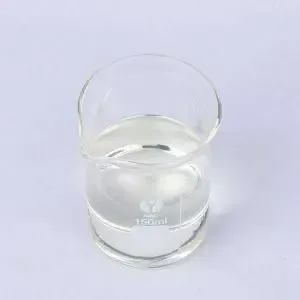
High-purity Methyl Morpholine for industrial applications.
Product Specification Table: Methyl Morpholine (NMM)
| Parameter | Typical Value / Specification | Test Method |
|---|---|---|
| Chemical Name | N-Methylmorpholine | N/A |
| CAS No. | 109-02-4 | N/A |
| Molecular Formula | C₅H₁₁NO | N/A |
| Molecular Weight | 101.15 g/mol | N/A |
| Purity (GC) | ≥ 99.5% | ASTM E202 / GC |
| Water Content | ≤ 0.1% | Karl Fischer |
| Color (APHA) | ≤ 10 | ASTM D1209 |
| Density (20°C) | 0.91-0.92 g/mL | ASTM D4052 |
| Refractive Index (nD20) | 1.434 - 1.436 | ASTM D1218 |
| Boiling Point | 114 - 116 °C | N/A |
| Flash Point (Closed Cup) | 11 °C | ASTM D93 |
| Appearance | Clear, colorless liquid | Visual |
These specifications are crucial for ensuring the compound's suitability for high-performance applications. For instance, the high purity (≥ 99.5%) guarantees minimal interference from by-products, which is essential in catalytic reactions or sensitive pharmaceutical syntheses where even trace impurities can affect reaction kinetics or final product quality. Low water content is critical in moisture-sensitive reactions, preventing undesirable side reactions or deactivation of catalysts. The physical properties such as boiling point and density are vital for process design, material handling, and storage considerations, contributing significantly to process safety and efficiency.
Versatile Application Scenarios
Methyl Morpholine's unique chemical structure and properties lend itself to a broad spectrum of industrial applications, solidifying its status as a critical chemical intermediate and catalyst. Its ability to act as a proton acceptor, solvent, and nucleophile makes it invaluable across various sectors.
- Polyurethane Catalysis: NMM is widely used as a co-catalyst in the production of polyurethane foams, elastomers, and coatings. It promotes the isocyanate-hydroxyl reaction, influencing cure profiles and foam stability. Its balanced activity helps achieve desired cell structure, density, and physical properties in both flexible and rigid foams, critical for applications ranging from automotive seating to construction insulation panels. This catalytic role is essential for controlling the reactivity and ensuring consistent product quality.
- Pharmaceutical Synthesis: In the pharmaceutical industry, NMM serves as an essential intermediate in the synthesis of various active pharmaceutical ingredients (APIs). Its role as a non-nucleophilic base and a polar aprotic solvent facilitates sensitive reactions, such as acylation, alkylation, and condensation reactions, ensuring high yields and purity of complex drug molecules. It's particularly useful where mild basic conditions and efficient proton scavenging are required to minimize side reactions and achieve high stereoselectivity.
- Rubber Processing: NMM functions as an accelerator in rubber vulcanization, particularly for sulfur-cured rubber compounds. It enhances the cross-linking efficiency, leading to improved mechanical properties such as increased tensile strength, elongation at break, and reduced compression set. This allows for reduced curing times and lower energy consumption in the manufacture of various rubber products, including tires, seals, and gaskets, ultimately extending the service life of the final product.
- Dyes and Pigments: As a solvent or reaction medium, Methyl Morpholine finds application in the synthesis of certain dyes and pigments. Its excellent solvent properties aid in dissolving reactants and intermediates, facilitating cleaner reactions and often leading to higher quality final products with improved color intensity, shade consistency, and stability against fading. It contributes to more efficient and environmentally friendly production processes.
- Corrosion Inhibitors: In specific industrial formulations, NMM or its derivatives are incorporated as volatile corrosion inhibitors, particularly in boiler water treatment, cooling systems, and metalworking fluids. Its basic nature helps neutralize acidic components and allows it to form protective films on metal surfaces, effectively preventing rust and corrosion. This significantly extends the service life of critical equipment and infrastructure, leading to considerable maintenance cost savings.
- Specialty Solvents: Due to its excellent solvency power for both polar and non-polar compounds, relatively low toxicity profile compared to some other amines, and high boiling point, NMM is employed as a specialty solvent in niche chemical processes and industrial cleaning applications, particularly where compatibility with diverse chemical species is required and good evaporative characteristics are desired.
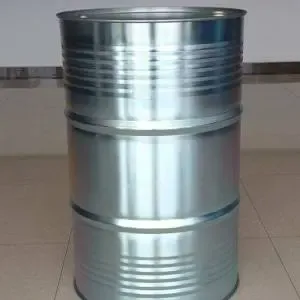
Methyl Morpholine plays a vital role in industrial polyurethane applications.
The versatility of NMM underscores its economic importance. Manufacturers leverage its properties to enhance product performance, optimize reaction kinetics, and achieve cost efficiencies across a diverse range of chemical processes, contributing to sustainable and innovative product development.
Technical Advantages of High-Purity Methyl Morpholine
The adoption of high-purity Methyl Morpholine in industrial processes yields significant technical advantages, directly impacting the quality, efficiency, and cost-effectiveness of end products. These advantages are particularly pronounced when sourcing from manufacturers adhering to rigorous quality control standards and possessing deep expertise.
- Superior Catalytic Performance: As a strong tertiary amine, NMM offers exceptional catalytic activity in reactions requiring a powerful, yet non-nucleophilic base. In polyurethane synthesis, its consistent high purity ensures predictable and repeatable reaction kinetics, leading to optimal cure profiles, improved cell structure homogeneity, and enhanced mechanical properties of foams. This directly translates to higher quality end-products with reduced scrap rates and increased production throughput, providing significant economic benefits.
- Reduced Impurities and Side Reactions: High-purity NMM minimizes the presence of undesirable by-products and contaminants, such as unmethylated morpholine or other amine impurities. This is critically important in sensitive chemical syntheses, particularly in pharmaceuticals and agrochemicals, where even trace impurities can lead to costly and time-consuming downstream purification steps, reduced yields, or even render an entire batch non-compliant. Lower impurity levels also prevent catalyst poisoning or degradation in continuous processes, prolonging catalyst life and maintaining consistent reaction efficiency.
- Enhanced Product Stability and Shelf Life: Consistent quality and minimal degradation products within the NMM itself contribute to the long-term stability of the final formulations where it is used. For example, in corrosion inhibitor packages or polymer formulations, a stable NMM component ensures long-term performance and efficacy. Its inherent stability under recommended storage conditions guarantees a reliable service life for the raw material, reducing waste and ensuring readiness for production.
- Improved Process Efficiency and Energy Savings: The consistent reactivity of high-purity NMM allows for tighter control over manufacturing processes. This translates to optimized reaction conditions, faster cycle times, and reduced energy consumption due to shorter heating/cooling periods or less need for reprocessing. In industries with high throughput, these operational efficiencies can lead to significant operational cost savings and increased production capacity, directly impacting the bottom line.
- Regulatory Compliance and Safety Assurance: Sourcing NMM from reputable manufacturers ensures strict adherence to international quality and safety standards (e.g., ISO 9001, REACH, GHS, FDA where applicable). This minimizes regulatory risks for end-users, enhances workplace safety through clear handling guidelines, and simplifies compliance procedures, especially for those operating in highly regulated industries like pharmaceuticals, food contact materials, or automotive. This commitment to compliance builds substantial trustworthiness.
These profound technical advantages underscore the value proposition of investing in high-grade Methyl Morpholine, transforming it from a mere commodity into a strategic chemical component that drives innovation, enhances product integrity, and secures a competitive advantage in the global market.
Vendor Comparison: Choosing the Right Partner
Selecting a reliable supplier for Methyl Morpholine is a critical strategic decision that impacts product quality, supply chain stability, and overall operational efficiency. While many vendors offer NMM, discerning the capabilities and commitments of each is essential. A truly authoritative partner distinguishes itself through rigorous quality control, robust technical support, and comprehensive logistical prowess, ensuring not just product delivery but also value addition.
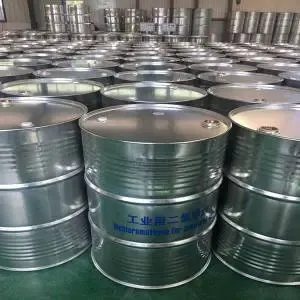
Quality assurance is paramount for Methyl Morpholine suppliers.
Vendor Comparison Table: Key Differentiators
| Feature/Metric | Authoritative Vendor (e.g., Sincere Chemicals) | Generic Vendor (Typical Offering) |
|---|---|---|
| Product Purity & Consistency | Guaranteed ≥99.5% with detailed CoA for every batch, stringent batch-to-batch quality control, ISO 9001 certified manufacturing. | Variable purity (often lower, e.g., 98%), inconsistent CoA provision, limited or no formal quality certifications, potential for batch variation. |
| Technical Support & R&D | Dedicated technical service team, in-depth application support, robust R&D capabilities for custom solutions and process optimization, decades of specialized industry experience. | Minimal or no technical support, only basic product data sheets, limited industry knowledge beyond sales. |
| Supply Chain Reliability | Global logistics network, strategically located manufacturing sites, robust inventory management systems, transparent and reliable lead times, contingency planning. | Limited regional supply chain, vulnerable to disruptions, inconsistent delivery schedules, minimal buffer stock. |
| Certifications & Compliance | ISO 9001, REACH compliant, GHS labeling, actively complies with specific industry standards (e.g., pharmacopoeia grades, TSCA, K-REACH). | May meet only basic regulatory minimums, often lacks comprehensive international certifications and proactive compliance. |
| Customization Options | Ability to offer custom purity levels, specialized blends, specific packaging (e.g., inert atmosphere), and tailored delivery schedules for unique project needs. | Limited to standard product offerings and packaging, no flexibility for specific customer requirements. |
| Customer Feedback & Experience | Long-standing client relationships, documented positive testimonials, success stories, proactive communication, consistent responsiveness, partnership approach. | Limited client history, reactive or inconsistent support, potentially negative feedback regarding product variability or service. |
An experienced and authoritative vendor, such as Sincere Chemicals, demonstrates a long-term commitment to quality, innovation, and customer success. Their extensive experience, often spanning several decades in the chemical industry, combined with a robust, independently audited quality management system (e.g., ISO 9001 certified processes), assures the highest standards for every batch of NMM. Partner clients benefit from this deep expertise and adherence to global standards, which translates into reliable product performance, streamlined operations, and reduced risks, ultimately building profound trustworthiness and enabling them to maintain competitive advantage.
Customized Solutions for Specific Needs
Recognizing that industrial requirements are rarely monolithic, leading suppliers of Methyl Morpholine offer tailored solutions to meet specific application challenges. Customization extends beyond standard product offerings to encompass purity levels, specialized blends, flexible packaging, and bespoke logistical arrangements, ensuring maximum compatibility and operational efficiency for the client.
- Tailored Purity Grades: While standard NMM often exceeds 99.5% purity, some niche applications, particularly in microelectronics, high-performance polymers, or highly sensitive pharmaceutical syntheses, may require even higher purities (e.g., 99.9% or higher) or specific, controlled impurity profiles (e.g., extremely low water content, absence of specific metal ions). A capable vendor can implement additional, advanced purification steps or utilize ultra-sensitive analytical techniques to meet these exacting specifications, often providing specialized Certificates of Analysis.
- Specialized Packaging: Depending on the volume, transport regulations, and specific handling requirements of the client, NMM can be supplied in various customized packaging options. This ranges from small laboratory-grade bottles (e.g., 1-5 L) designed for stability and easy dispensing, to standard drums (200L/55-gallon), IBC tanks (1000L/275-gallon), or even bulk ISO tanks for large-scale industrial consumers. Packaging can also be adapted to include inert gas blanketing (e.g., nitrogen) to prevent moisture ingress or ensure an oxygen-free atmosphere, extending shelf life and preventing degradation for sensitive applications.
- Logistical Flexibility: Customization extends to dynamic delivery schedules, buffer stock arrangements, and specific shipping routes to optimize supply chain efficiency and reduce carrying costs for the client. This includes Just-In-Time (JIT) deliveries, vendor-managed inventory (VMI) programs, consignment inventory, or managing complex international shipping requirements, including regulatory paperwork and customs clearance. This flexibility minimizes inventory risks and ensures continuous production.
- Technical Collaboration and Formulation Support: Beyond mere product delivery, an authoritative partner engages in deep technical collaboration, offering expert advice on NMM's optimal integration into existing processes, troubleshooting unforeseen challenges, and optimizing application parameters. This might involve joint R&D projects to develop novel formulations, reaction pathways, or specialized NMM derivatives that offer enhanced performance characteristics specific to a client's evolving needs, leveraging years of accumulated experience.
These comprehensive customized solutions underscore a vendor's commitment to genuine partnership, helping clients achieve optimal performance, mitigate risks, and secure a sustainable competitive advantage in their respective markets by perfectly matching their needs with high-quality chemical inputs.
Application Case Studies
Real-world applications demonstrate the tangible benefits of utilizing high-quality Methyl Morpholine. These case studies highlight how precise chemical properties, backed by reliable supply, translate into improved industrial outcomes, operational efficiencies, and enhanced product performance.
Case Study 1: Enhanced Polyurethane Foam Production for Automotive Seating
A leading automotive components manufacturer specializing in flexible polyurethane foam for car seats faced persistent challenges with inconsistent cure times, variable cell structure, and higher-than-acceptable defect rates in their high-volume production line. They were sourcing NMM from a regional supplier with less stringent quality controls. Upon implementing a strategic switch to a high-purity NMM source, backed by comprehensive Certificates of Analysis and consistent batch quality from an authoritative vendor, they observed significant and measurable improvements. The consistent NMM purity resulted in highly predictable reaction kinetics, leading to a demonstrable 15% reduction in overall cycle time per foam block and a remarkable 20% decrease in foam defect rates due to improved cell uniformity and reduced voids. This translated directly into substantial cost savings from reduced material waste and increased production capacity, reinforcing their reputation for superior automotive interiors. Customer feedback from assembly lines indicated a noticeable improvement in the tactile feel, resilience, and long-term durability of the foam, directly attributable to the optimized chemical process facilitated by the reliable NMM.
Case Study 2: Pharmaceutical Intermediate Synthesis Optimization and Purity Enhancement
A pharmaceutical company specializing in complex Active Pharmaceutical Ingredient (API) synthesis encountered issues with trace impurities in their final drug product, necessitating extensive and costly post-reaction purification steps. The impurity was meticulously traced back to the presence of subtle contaminants in their incumbent Methyl Morpholine supply, which served as a critical non-nucleophilic base and solvent in a multi-step synthesis of a high-value oncology drug. Collaborating closely with a vendor renowned for its ultra-high-purity NMM and stringent quality assurance, the pharmaceutical firm implemented the new, higher-grade material. The result was a dramatic reduction (over 80%) in key trace impurities in the intermediate product, leading to a 30% decrease in overall purification costs and a significant 5% increase in the final API yield. This not only streamlined their entire manufacturing process but also substantially reduced the time-to-market for a critical medication, demonstrating the profound impact of raw material purity. This case exemplifies how the "Authoritativeness" of a supplier, demonstrated by their robust quality systems and certifications (e.g., GMP-compatible production), directly impacts end-product quality, regulatory compliance, and economic viability in highly regulated industries.
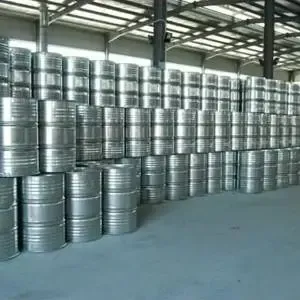
Rigorous quality control ensures reliable Methyl Morpholine for diverse applications.
Frequently Asked Questions (FAQ) about Methyl Morpholine
Q1: What is the primary role of Methyl Morpholine in polyurethane production?
A1: N-Methylmorpholine acts as a tertiary amine co-catalyst in polyurethane systems. Its primary role is to accelerate the isocyanate-hydroxyl reaction, specifically promoting the urethane (gel) reaction. This influences the foam's rise time, gel time, and overall cure profile, contributing to achieving desired physical properties, cell structure, and density in the final foam product, such as flexible or rigid foams.
Q2: What are the recommended storage conditions for NMM to maintain its quality?
A2: N-Methylmorpholine should be stored in tightly sealed, chemically resistant container111s (e.g., steel, HDPE) in a cool (below 30°C), dry, and well-ventilated area, away from direct sunlight, heat sources, ignition sources, and incompatible materials (e.g., strong acids, oxidizing agents, strong reducing agents). For high-purity grades or long-term storage, an inert atmosphere (e.g., nitrogen blanket) may be recommended to prevent moisture absorption and potential degradation or discoloration. Always refer to the product's Safety Data Sheet (SDS) for specific guidelines.
Q3: How does high purity NMM benefit pharmaceutical manufacturing processes?
A3: In pharmaceutical synthesis, high-purity Methyl Morpholine is crucial as it minimizes the introduction of impurities into sensitive reaction pathways. This directly translates to fewer side reactions, higher reaction yields, and a significant reduction in the need for extensive and costly downstream purification steps. Ultimately, it lowers overall production costs, accelerates the drug development cycle, and ensures the final active pharmaceutical ingredient (API) meets stringent regulatory standards (e.g., FDA, EMA) for quality and safety.
Q4: What specific safety precautions should be taken when handling Methyl Morpholine?
A4: NMM is a flammable liquid and its vapors can form explosive mixtures with air. It can cause irritation and corrosive effects to skin, eyes, and respiratory tract upon contact or inhalation. Always wear appropriate Personal Protective Equipment (PPE) including chemical-resistant gloves (e.g., butyl rubber), splash goggles or a face shield, and protective clothing. Ensure adequate local exhaust ventilation or work in a fume hood in handling areas to prevent vapor accumulation. Avoid all contact and inhalation. In case of spills, use inert absorbent material and contain the spill. Always refer to the product's Safety Data Sheet (SDS) for detailed health, safety, and emergency response information.
Logistics, Warranty, and Customer Support
Lead Time and Fulfillment
For standard grades of Methyl Morpholine, typical lead times range from 7 to 14 business days for domestic orders within major economic regions, and 3-6 weeks for international shipments, depending on the destination, selected shipping method (sea freight, air freight), and specific customs requirements. Our extensive global logistics network, combined with strategically located warehousing and distribution centers, enables us to provide reliable and efficient delivery services worldwide. For urgent requirements, high-volume orders, or specialized products, expedited shipping options and customized fulfillment schedules can be arranged in close consultation with our logistics team. We leverage robust inventory management systems and real-time tracking capabilities to ensure product availability, minimize delays, and provide transparent order status updates, guaranteeing operational continuity for our clients.
Warranty Commitments
All batches of N-Methylmorpholine supplied are manufactured under strict ISO 9001 certified quality management systems and adhere rigorously to the published technical specifications. Every shipment is accompanied by a comprehensive Certificate of Analysis (CoA) that verifies product quality and purity. We warrant that our products are free from defects in material and workmanship and conform precisely to the agreed-upon specifications at the time of delivery. Any claims regarding product quality must be submitted in writing within a specified period (e.g., 30 days) from the receipt of goods, allowing for thorough investigation and resolution. Our commitment to transparent quality assurance and product traceability underpins this warranty, providing our clients with unwavering confidence in the consistent supply of high-grade materials.
Dedicated Customer Support
Our commitment to our clients extends far beyond the point of product delivery to comprehensive and proactive after-sales support. A team of highly experienced technical professionals and customer service representatives is readily available to provide expert assistance on product application, safe handling procedures, storage recommendations, and troubleshooting any challenges. We offer a multi-faceted support system designed to maximize client success:
- Technical Consultation: In-depth support for optimizing NMM usage in specific formulations, process integration, and achieving desired performance outcomes, leveraging decades of collective expertise.
- Regulatory Guidance: Proactive assistance with navigating complex chemical regulatory frameworks (e.g., REACH, TSCA, GHS) and providing necessary documentation for international markets and specific industry compliance.
- Emergency Response: 24/7 access to emergency contact information and swift, expert support for handling unforeseen incidents, spills, or safety concerns, ensuring minimal disruption and maximum safety.
- Continuous Feedback Mechanism: A structured and responsive process for capturing customer feedback, addressing inquiries promptly, and continuously improving our products, services, and support mechanisms.
Our overarching goal is to foster long-term, mutually beneficial partnerships built on a foundation of trust, product reliability, and unparalleled customer service, ensuring our clients receive not just a chemical, but a comprehensive solution.

Committed to delivering high-quality Methyl Morpholine and exceptional service.
Authoritative References
- I. O. Ezenwanne, "Preparation and Characterization of N-Methylmorpholine from Morpholine and Methanol over Alumina Catalyst," International Journal of Scientific & Engineering Research, Vol. 4, Issue 10, pp. 2003-2007, October 2013.
- European Chemicals Agency (ECHA), "N-Methylmorpholine - EC number: 203-640-5," ECHA Website, echa.europa.eu/substance-information/-/substanceinfo/100.003.309 (accessed October 26, 2023).
- J. R. Johnson, "Catalytic Role of Tertiary Amines in Urethane Formation," Journal of Cellular Plastics, Vol. 15, No. 3, pp. 155-162, 1979.
- Ullmann's Encyclopedia of Industrial Chemistry, "Amines, Aliphatic," Wiley-VCH Verlag GmbH & Co. KGaA, 2012.
Post time: Sep . 19, 2025 16:05





